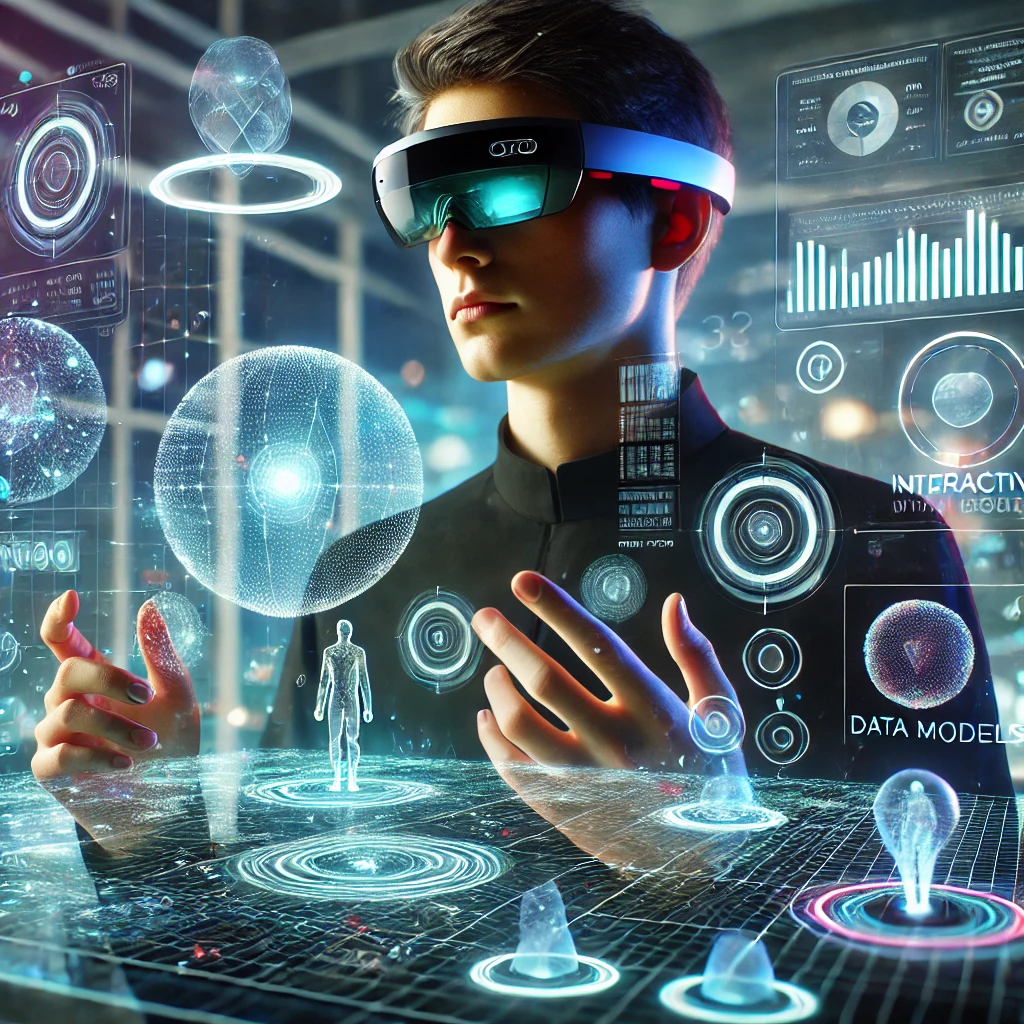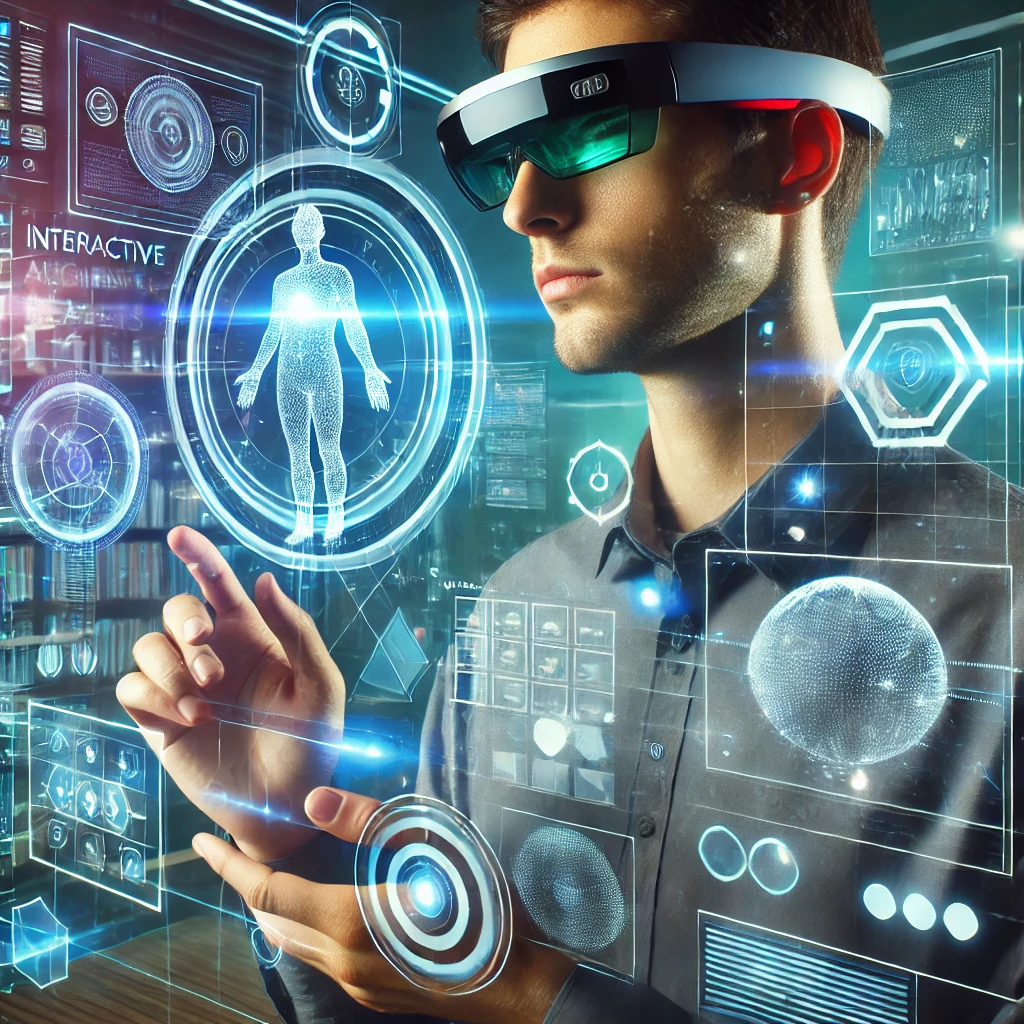Leveraging the Future: Reasons You Need to Start Doing AR Marketing Too

The next generational trend of digital marketing is upon us, where each digital interaction transforms into a unique experience, and every experience leads you into a realm designed specifically for you. This is not the traditional marketing of billboards and print ads; instead, it’s a landscape where artificial intelligence and marketing trends merge with Augmented Reality (AR), producing immersive experiences that only existed in films before.
Consumers are quickly evolving to be more discerning, technologically adept, and eager to engage with businesses that are both sophisticated and innovative. These expectations grow in tandem with technological progress. Consequently, brands aiming to stay relevant must allocate resources towards efficient and impactful technology to improve their connections with their target audience.
Augmented reality stands out as a major technological trend in the marketing sector, with specialists predicting a swift rise in its adoption. The global Augmented Reality Market is projected to reach USD 591.7 billion by 2033. The market’s growth is fueled by technological advancements and rising consumer demand for immersive experiences. AR marketing enables brands to offer their customers distinctive experiences that are not only convenient but also intelligent and easily accessible. When paired with data-driven insights, such as those provided by advanced marketing analytics platforms, AR campaigns can be optimized for greater impact. For instance, by analyzing user engagement data, marketers can refine AR experiences to better align with customer preferences, ultimately enhancing the overall effectiveness of their campaigns.
In this article, we’ll discuss the basic groundwork of AR marketing, its potential impact on your business, and its relevance in the overall digital marketing landscape.
What Is Augmented Reality Marketing?
In simple terms, it refers to the use of augmented reality technology to incorporate and present marketing content within a customer’s surroundings. Additionally, it can be viewed as a marketing or sales approach that enables brands to engage consumers, facilitating informed purchasing choices and minimizing product returns.
Augmented reality (AR) is a cutting-edge technology that integrates digital elements, such as images, videos, or 3D models, into the physical world, typically experienced through a smartphone, tablet, or device equipped with AR capabilities. In contrast to virtual reality (VR), which immerses users in a fully digital environment, AR enhances the real-world experience by incorporating digital components, thereby enriching the user’s interaction and perception of their environment. AR applications can vary from straightforward overlays to intricate interactive simulations, providing limitless opportunities for creativity and engagement.
The realm of digital marketing is in a state of constant transformation, with new technologies emerging to revolutionize customer interaction. One such advancement is Augmented Reality (AR), which is swiftly changing how we engage with our surroundings. AR overlays computer-generated visuals onto the real world, as seen through the camera of a smartphone or tablet.
Consider the ability to virtually try on sunglasses before making a purchase, visualize 3D furniture models placed in your living space to assess their appearance, experience a product demo in a trade show setting, or visualize how a complex piece of machinery operates in a real-world environment before making a purchase. For B2B marketers, AR can transform traditional trade shows into interactive virtual experiences, allow potential clients to explore products remotely through virtual product demonstrations, or enhance sales enablement by providing sales teams with immersive tools that showcase products in 3D. These examples illustrate just a fraction of the thrilling opportunities that AR offers for digital marketing.

The Benefits of Augmented Reality Marketing
In recent years, augmented reality (AR) marketing has emerged as a powerful tool that many advocates believe can significantly boost sales, emphasize the importance of brand value, and create truly unique customer experiences. But what exactly are the benefits of AR marketing, and how are various companies effectively implementing these innovative tactics to enhance their marketing strategies?
Entice and engage potential clients effectively
One of the standout features of augmented reality is its ability to transform the traditional concept of trying on products. With AR technology, consumers can virtually model a wide array of items without the need for companies to maintain a large physical inventory. This not only saves costs associated with stocking products but also allows consumers to visualize how items will look or function in their own lives before making a purchase. For instance, furniture retailers can enable customers to see how a couch would fit in their living room, while cosmetic brands can allow users to try on makeup virtually.
Take IKEA’s launch of its IKEA Place app, an innovative application that allows people to virtually place their IKEA items within their targeted space. This offers a fresh way to engage with IKEA products which leads to increased customer satisfaction and, ultimately, higher sales.
Augmented branding materials
Storytelling is a crucial element of successful marketing, allowing brands to forge emotional connections with their audience while conveying their values, mission, and vision. Augmented reality opens up new avenues for brands to narrate compelling stories and engage users in immersive narratives. Whether it involves bringing historical moments to life, showcasing behind-the-scenes content, or crafting interactive experiences that transport users to different realms, AR empowers brands to create memorable and impactful storytelling experiences that resonate deeply with their audience.
Another significant advantage of augmented reality marketing is its ability to enhance branded materials. Through AR, static elements such as business cards, brochures, and advertisements can be scanned and transformed into dynamic, interactive experiences. For example, a business card can be designed to provide a variety of contact options, social media links, or even a video introduction when scanned with a smartphone. Similarly, a brochure can serve as a virtual gateway, allowing potential customers to access additional information through engaging video content. This not only captures the attention of consumers but also provides them with a richer understanding of the brand and its offerings.
Create a larger scale of brand awareness
One of the primary advantages of augmented reality (AR) in the realm of digital marketing is its capacity to boost user interaction and craft unforgettable brand experiences. By utilizing AR technology, brands can provide immersive and engaging experiences that captivate the attention and creativity of their audience. Whether it involves virtually trying on apparel, visualizing how furniture fits within a space, or examining 3D models of products, AR enables users to connect with brands in a more significant and interactive manner. This deeper engagement can lead to heightened brand recognition, loyalty, and advocacy among consumers.
Indirect sales and marketing strategists can also harness the power of AR technology to create engaging experiences that generate buzz around their brand. By crafting fun and interactive AR campaigns, brands can capture the interest of consumers and encourage them to share their experiences on social media.
A notable example is Uber’s AR campaign in Zurich. In 2017, the brand launched an interactive display which allowed people to engage with virtual animals alongside their brand. This, even during the infant stages of AR marketing, proved that meaningful AR experiences are indeed powerful.
Launch immersive, interactive, and personalized experiences
Augmented reality marketing empowers consumers to personalize their online content through customized apps and other provided materials. Imagine the experience of shopping in a supermarket enhanced by AR technology. With a smartphone AR app, consumers can scan products to see what prices are on sale, discover available coupons, and identify optimal buying combinations that make sense for their shopping needs. This level of interactivity not only enhances the shopping experience but also fosters a deeper connection between the consumer and the brand.
Furthermore, AR marketing can help marketers drive value by creating tailored, personalized content that caters to the unique preferences and needs of each consumer. By leveraging data and insights, brands can deliver targeted messages that resonate with individual consumers, ultimately leading to increased engagement and loyalty.
Differentiate and stand out from the crowd
In the saturated market, brands are perpetually looking for methods to stand out and set themselves apart from their rivals. Augmented reality presents a distinctive opportunity for brands to distinguish themselves by delivering innovative and unforgettable experiences that leave a lasting impact on users. Brands that adopt AR can present their products or services in fresh and imaginative ways, allowing users to interact with and experience them in manners that were previously unattainable. This differentiation can help brands to capture attention, generate excitement, and position themselves as frontrunners within their industry.
Helps with consumer buying decision and increase sales
The immersive and interactive nature of augmented reality can significantly aid consumers in their buying decisions. By providing engaging experiences that surprise and delight consumers, brands that utilize AR technology often find themselves becoming the first choice for consumers. This is particularly important in a competitive marketplace where standing out is crucial. Marketers can measure engagement levels through AR interactions, gaining valuable insights into consumer behavior and preferences.
Augmented reality holds the potential to enhance sales and conversion rates by providing users with a more immersive and interactive shopping experience. By enabling users to visualize products within their actual environment prior to making a purchase, AR can alleviate uncertainty and hesitation, resulting in increased confidence and intent to buy. Research has indicated that AR can significantly boost conversion rates and reduce product returns by offering users a more precise representation of items and aiding them in making informed purchasing choices. According to Forbes, companies utilizing visual configurators powered by AR have experienced conversion rate increases of up to 40% by providing customers with more engaging and personalized product experiences.
The Future of Augmented Reality Marketing
Looking ahead, the future of augmented reality marketing appears exceptionally promising, especially when combined with other cutting-edge technologies such as machine learning and the Internet of Things (IoT). As these technologies continue to evolve, they will further enhance the capabilities of AR marketing, allowing brands to create even more sophisticated and personalized experiences for their customers.
Augmented reality is not just a passing trend; it offers real, tangible solutions that can help drive sales and foster marketing innovations. Beyond its applications in the gaming and entertainment industries, AR presents a wealth of opportunities for forward-thinking retailers and brands to provide consumers with customized experiences that can lead to sustainable growth.